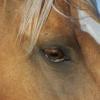-
Posts
7,772 -
Joined
-
Last visited
Contact Methods
-
Website URL
https://www.rw-leatherworks.com
Profile Information
-
Gender
Male
-
Location
Flint, Michigan, USA
-
Interests
Leather work, sewing and sewing machines
LW Info
-
Leatherwork Specialty
Handgun holsters, tooled belts, bridle leather belts, custom made to order leather items, sewing patches onto bikers' vests, alterations, zipper replacements and repairs of leather goods.
-
How did you find leatherworker.net?
Google search
Wizcrafts's Achievements

Leatherworker.net Regular (4/4)
-
Tom, those links don't show the feet unless one is a member of Facebook AND has joined that Facebook Group.
-
Have you read my article about how to post photos to our forum?
-
I don't have any experience with this motor. I have been using analog servo motors exclusively since about 2012 or 2013 I still have my previous digital motor with the gradient light beam disrupter wafer in a closet in my trailer.
-
I've been watching this thread grow in frustration as people discover the weaknesses of the various servo motors they've purchased, only to find that most were wanting in either slow speed torque or starting speed. I see plenty of reports of high torque servo motors that start with a jerk at anywhere from 50 to 200 rpm. People owning analog, brushed servo motors get a smoother startup from zero, but the torque is so low that a speed reducer may be needed to get the machine to turn over. I want to tell you a story about an analog servo motor that I used to buy for my heavy leather stitchers, and even my walking foot machines. It was called the SewPro 500GR, which was sold by Toledo Industrial Sewing Machines, back in 2012 through about 2016, or maybe 2018. The motor had replaceable brushes (with spares included), a fully adjustable brake lever, and, wait for it ... a built in 3:1 speed reducer. That motor could power almost any sewing machine that was smaller that the 441 clones. It powered my cb4500 via a 3:1 speed reducer, mainly to add punching power at very slow speeds. I drove all over my walking foot machines from zero to its maximum speed without any jerks or hesitation. The motor was reliable and sold like hotcakes. Then, one day the employees went of for lunch and never came back! They shuttered the factory! Poof, gone! For a few years, enterprising folks learned that they could print out gradients onto transparent plastic wafers that replaced the original solid wafers that were moved across the light beam or photocell receiver. The gradient wafers allowed the digital servo motors to start at such a slow speed that it was virtually unnoticeable. The trick was keeping the gradient wafers affixed to the moving control lever. Eventually, we just stopped using those motors and switched to analog motors fed through speed reducers. I personally prefer to use analog servos with either 2:1 or 3:1 speed reducers, rather than a digital servo that starts at a noticeable speed bump. I sacrifice the top speed that I don't really need in exchange for low speed torque and a very smooth startup.
-
@bsshog40 Please read this sticky topic that I started several years ago, which describes the type of machine you need to sew leather.
-
@janosaw, I moved your request to the Leather Sewing Machines forum. You will get better answers in this section.
-

upgrading to oldschool singer 132k6 and 132k7
Wizcrafts replied to VinnyK's topic in Leather Sewing Machines
The Singer 132k6, with the spring loaded follow foot, was actually designed for the buffing wheel industry. I think there was an attachment that secured the center of the wheel and moved it slowly in time with the action of the machine to sew through all of the layers of cloth in a circular spiral pattern. The capacity is 1/2 inch, or 12.5mm. The follow foot is only useful if it can grab a hold of the top surface, like it can in cloth items. I tried sewing slicked leather belts along the edges only to have the foot slide on the top and do nothing to help the feed. As a result, the stitch length varied and I ruined some things until I got wise and sold the machine. Assuming you can get one of them to work, it might be good for upholstery that is thicker than the Adler can handle, or requires a heavier weight thread. The 132 I had was able to handle up to #346 bonded nylon thread. -
I think you might have a good shot at it with a post bed machine that has a roller foot and a roller feed dog.
-
Here is a YouTube video showing a glove sewing machine in operation:
-
Are you aware of glove sewing machines? These are specialty post bed machines that are mounted onto industrial sewing machine tables that can have a servo for precise control. They have a tiny top profile that gets inside the fingers of the gloves. Aside from dedicated glove machines, you could find a used post bed machine that already has a small roller foot and possibly a roller feed dog. These are used to sew hats and caps, or arm holes in shirts and vests.
-
That is correct. It is a walking foot machine and is not a candidate for a roller foot conversion. If you really want a roller foot machine that is on par with you Outlaw stitcher, search for a Singer 45k with a roller foot installed at the factory. Or, buy a modern day clone like the Cowboy cb2500, which can be fitted with a roller foot by the dealer.
-
Some of us, myself included, have machines without reverse. We can either sew all the way around an object and overlap the starting thread about 5 stitches, or tie off the starting threads under the work, or spin the work 180 degrees and perform poor man's reverse to sew over the starting few stitches. As for holding back both starting threads, some jobs render that impossible. A good example is sewing patches onto vests and jackets where you can only handle the top thread. In this case I hold down the top thread behind the presser foot so it doesn't get pulled down into the shuttle during the initial couple of stitches.
-
Fergettit! Walking foot machines are not candidates for conversion to a roller foot. That is pretty much limited to straight stitch machines that have a single foot and bar coming down. Yours is a walking foot machine with two bars to deal with. The first obstacle will be finding a roller foot mounting bracket that will fit into the slot in the center of the presser bar. Most of them are designed to attach to the outside of a round presser bar that may or may not have a flat edge on the left side. The inside foot would have to be removed. Lastly, the feed dog is centered under the inside foot. A roller foot usually sits out on the left of the feed dog. If the roller is too far from the feed dog, it may not be able to feed the leather without the bottom assist. Your only drive would be the moving needle. You are better off buying a straight stitch machine to convert to a roller foot. A large roller has smoother operation and is good for most edge sewing. A smaller wheel is better for sewing designs, or intricate stitching. If you are able to find a roller foot that does fit into the back presser bar, keep the edge of the roller as close to the needle as possible. This will keep the leather from lifting with the ascending needle. The greater the distance from the bottom of the roller to the left side of the needle, the greater the likelihood that you'll get skipped stitches from lifting leather.
-
Try listening as you handwheel the machine. It kind of sounds like gears are grinding from being too close together. I might also be the opener arm pulling the shuttle all the way back with a hard stop. There must be a little clearance when the arm pulls the tab back.








